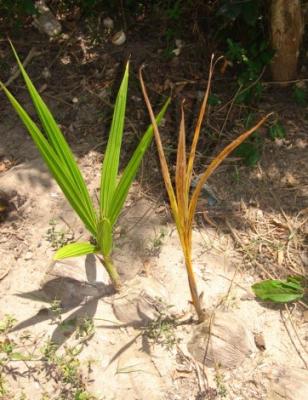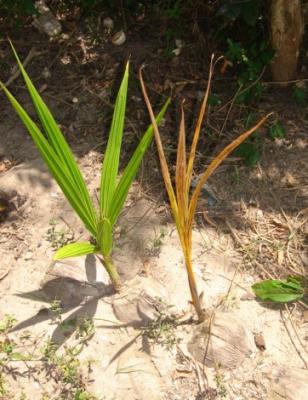

Bud rot (Phytophthora palmivora)
Bud rot (also called heart rot) caused by the fungus Phytophthora palmivora has an extensive host range of more than 200 plant species and it is widespread in the tropics including tropical Africa. The fungus enters into the plant by infecting tender host tissues (leaves, buds or young nuts). Affected leaves turn yellow and later brown.
The heart leaf becomes chlorotic, wilts and collapses. The disease may spread to older, adjacent leaves and spathes, producing a dead centre with a fringe of living leaves. Light brown to yellow, oily, sunken lesions may be found on leaf bases, stipules or pinnae. Internally, the tissues beneath the bud are discoloured pink to purple with a dark brown border. Affected leaves progressively drop. Infected nuts show brown to black necrotic areas with a yellow border developing on the surface; internally, they have a mottled appearance. Young nuts are highly susceptible and fail to mature, they then fall off the tree; older infected nuts ripen normally.
- Remove and destroy infected debris and infected coconut trees. This helps to reduce spread.
- Do not irrigate nurseries at dusk or at night to avoid prolonged periods of free moisture.
- Plant resistant varieties. Malaysian dwarf varieties, such as "Malayan Yellow Dwarf", "Bali" "Tall", "Malayan Yellow Dwarf" x "Palu Tall" hybrids, and other varieties originating in South-East Asia, show resistance.
